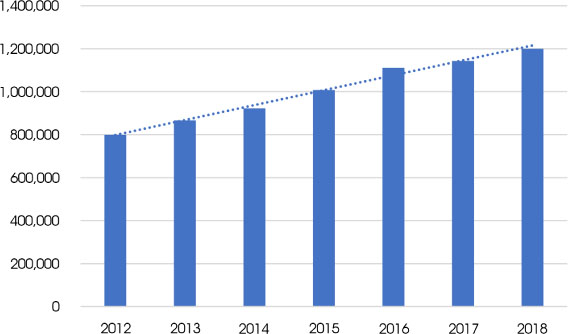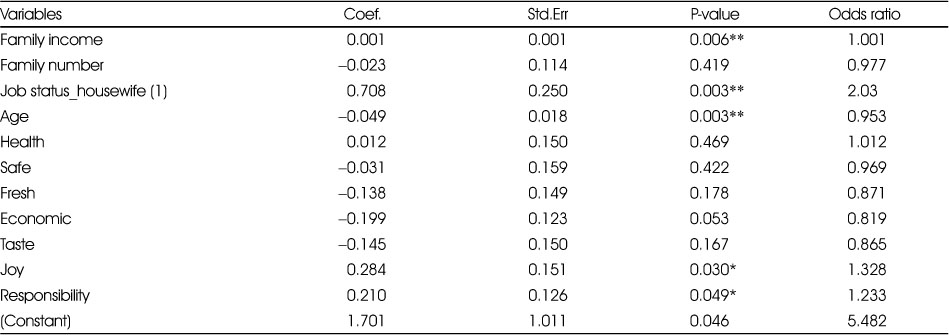Articles
- Page Path
- HOME > Korean J Community Nutr > Volume 24(4); 2019 > Article
-
Research Article
- The Effect of Consumers' Factors of Food Choices on Replacing Soft Drinks with Carbonated Water
-
Seoyoung Park
 , Dongmin Lee
, Dongmin Lee , Jaeseok Jeong
, Jaeseok Jeong , Junghoon Moon
, Junghoon Moon
-
Korean Journal of Community Nutrition 2019;24(4):300-308.
DOI: https://doi.org/10.5720/kjcn.2019.24.4.300
Published online: August 31, 2019
1Department of Agricultural Economics and Rural Development, Seoul National University, Korea, Graduate Student.
2Research Institute of Agriculture and Life Sciences, Korea, Research Engineer.
3Graduate School of Pan-Pacific International Studies, Kyung Hee University, Korea, Professor.
4Department of Agricultural Economics and Rural Development, Seoul National University, Korea, Professor.
- Corresponding author: Junghoon Moon. Department of Agricultural Economics and Rural Development, Seoul National University, 1 Gwanakro, Gwanakgu, Seoul, Korea. Tel: (02) 880-4722, Fax: (02) 873-5080, moonj@snu.ac.kr
Copyright © 2019 The Korean Society of Community Nutrition
This is an Open-Access article distributed under the terms of the Creative Commons Attribution Non-Commercial License (http://creativecommons.org/licenses/by-nc/3.0/) which permits unrestricted non-commercial use, distribution, and reproduction in any medium, provided the original work is properly cited.
- 650 Views
- 7 Download
- 1 Crossref
Figure & Data
REFERENCES
Citations

- Effects of the Dietary Behavior-Related Consumer Competency on the Purchase Satisfaction of Fresh Food via Early-Morning Delivery Service
Soon-Ok Lee, Ji-Young Kim, Seung-Min Lee
Journal of the Korean Society of Food Science and Nutrition.2021; 50(6): 612. CrossRef


Fig. 1
Fig. 2
General characteristics of subjects stratified according to replacement status
n, number; SD, standard deviation
Values are presented in mean ± SD or n (%)
1) Who increased purchase of carbonated water and decreased purchase of soft drink.
2) Who did not change a purchase pattern or who increased purchase of soft drink and decreased carbonated water.
3) Number of family member
4) Average monthly household income (Unit: KRW 10 thousand)
Descriptive statistics of survey variables
Loading of survey items
Correlation among constructs
1) The diagonal elements are squared roots of AVEs
Logit estimates for substitute of carbonated water
1) *: p<0.05, **: p<0.01
2) Nagelkerke R2=0.115, Hosmer-Lemeshow test p-value: 0.628
n, number; SD, standard deviation Values are presented in mean ± SD or n (%) 1) Who increased purchase of carbonated water and decreased purchase of soft drink. 2) Who did not change a purchase pattern or who increased purchase of soft drink and decreased carbonated water. 3) Number of family member 4) Average monthly household income (Unit: KRW 10 thousand)
1) The diagonal elements are squared roots of AVEs
1) *: p<0.05, **: p<0.01 2) Nagelkerke

 KSCN
KSCN







 PubReader
PubReader Cite
Cite


